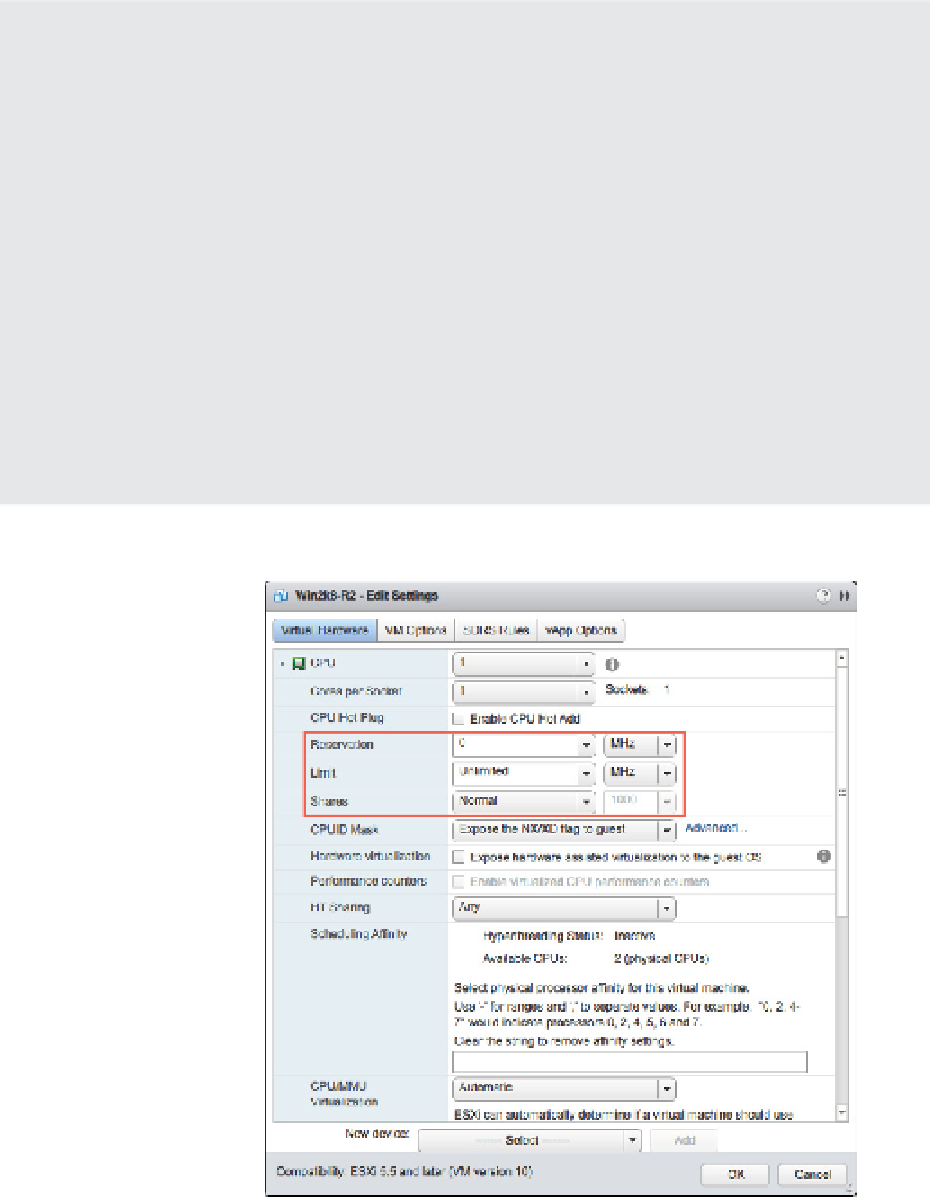Information Technology Reference
In-Depth Information
h e easiest approach is to construct a resource consumption document that details the following:
What is the standard confi guration for a new VM to be added to the inventory? Be sure to
specify critical confi guration points such as the size of the operating system drive, the size of
any data drives, and how much R AM is allocated. By establishing standards for VMs, you can
increase e ciency and ensure that VMs are right-sized.
◆
What are the decision points for creating a VM with specifi cations beyond the standard con-
fi guration? A standard confi guration is great, but it won't address every single need in your
organization. h ere w ill be exceptions, and you just need to document what drives an exception.
◆
How much of a server's resources can be consumed before availability and performance levels
are jeopardized? h is both aff ects and is aff ected by other design points, like N+1 redundancy.
◆
At the point where the resources for an ESXi host (or an entire cluster) are consumed, do you
add a single host or multiple hosts at one time?
◆
What is the maximum size of a cluster for your environment? When does adding another host
(or set of hosts) constitute building a new cluster? h is could aff ect operational considerations
like how many hosts get added at a time. For example, if you have to start a new cluster, then
you'll need at least two hosts, preferably three.
◆
Figure 11.1
Reservations,
limits, and shares
off er more fi ne-
grained control over
resource allocation.






























